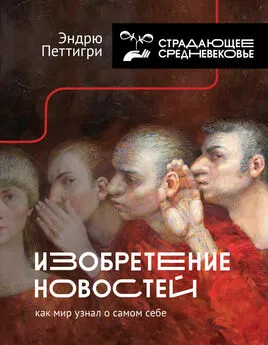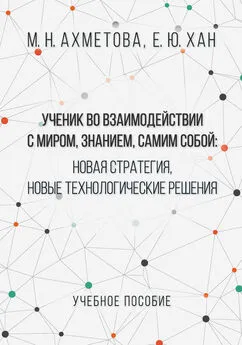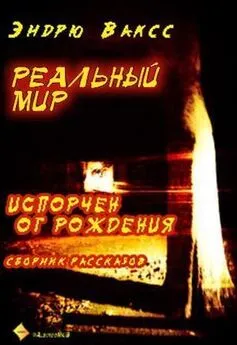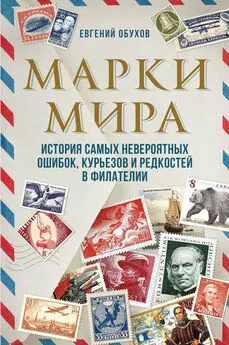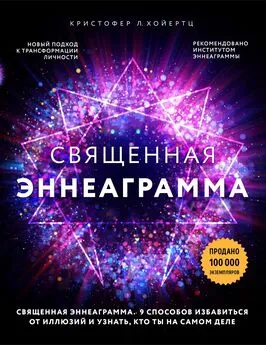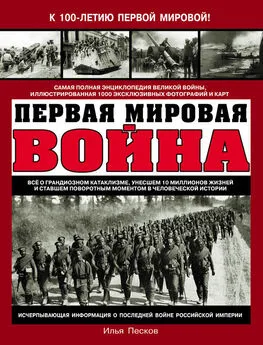Эндрю Петтигри - Изобретение новостей. Как мир узнал о самом себе
- Название:Изобретение новостей. Как мир узнал о самом себе
- Автор:
- Жанр:
- Издательство:АСТ
- Год:2021
- Город:Москва
- ISBN:978-5-17-127024-7
- Рейтинг:
- Избранное:Добавить в избранное
-
Отзывы:
-
Ваша оценка:
Эндрю Петтигри - Изобретение новостей. Как мир узнал о самом себе краткое содержание
Автор охватывает период почти в четыре века — от допечатной эры до 1800 года, от конца Средневековья до Французской революции, детально исследуя инстинкт людей к поиску новостей и стремлением быть информированными. Перед читателем открывается увлекательнейшая панорама столетий с поистине мульмедийным обменом, вобравшим в себя все доступные средства распространения новостей — разговоры и слухи, гражданские церемонии и торжества, церковные проповеди и прокламации на площадях, а с наступлением печатной эры — памфлеты, баллады, газеты и листовки. Это фундаментальная история эволюции новостей, начиная от обмена манускриптами во времена позднего Средневековья и до эры триумфа печатных СМИ.
В формате PDF A4 сохранен издательский макет.
Изобретение новостей. Как мир узнал о самом себе - читать онлайн бесплатно ознакомительный отрывок
Интервал:
Закладка:
198
J. A. Sharpe, ‘Last Dying Speeches: Religion, Ideology and Public Execution in Seventeenth-Century England’, Past and Present, 107 (1985), pp. 144-67.
199
Senn, Wickiana , p. 149.
200
Strauss, German Single-Leaf Woodcut , p. 488.
201
Jennifer Spinks, Monstrous Births and Visual Culture in Sixteenth-Century Germany (London: Chatto & Pickering, 2009); Aaron W. Kitch, ‘Printing Bastards: Monstrous Birth Broadsides in Early Modern England’, in Douglas A. Brooks (ed.), Printing and Parenting in Early Modern England (Aldershot: Ashgate, 2005), pp. 221-36.
202
Zurich ZB, PAS II 15:17, Strauss, German Single-Leaf Woodcut, p. 481.
203
Senn, Wickiana, pp. 216-17.
204
Ulinka Rublack, The Crimes of Women in Early Modern Germany (Oxford: Oxford University Press, 1999).
205
Strauss, German Single-Leaf Woodcut , p. 936.
206
Там же, с. 395, Zurich ZB PAS II 2:23; Zurich ZB PAS II 12:78. USTC 699843; ‘Shower of Wheat that Fell in Wiltshire’, in J. Paul Hunter, Before Novels: The Cultural Contexts of Eighteenth-Century English Fiction (New York: Norton, 1990), p. 186.
207
Burkard Waldis, Eyne warhafftige und gantz erschreckliche historien (Marburg, 1551). Joy Wiltenburg, ‘Crime and Christianity in Early Sensationalism’, in Marjorie Plummer and Robin Barnes (eds), Ideas and Cultural Margins in Early Modern Germany (Aldershot: Ashgate, 2009), pp. 131-45, here p. 135.
208
Wiltenburg, ‘Crime and Christianity’, p. 140.
209
Joy Wiltenburg, ‘True Crime: The Origins of Modern Sensationalism’, American Historical Review, 109 (2004), pp. 1, 377-1,404.
210
Wolfgang Behringer, ‘Witchcraft and the Media’, in Marjorie Plummer and Robin Barnes (eds), Ideas and Cultural Margins in Early Modern Germany (Aldershot: Ashgate, 2009), pp. 217-36.
211
Мы насчитываем двадцать шесть изданий, опубликованных до 1600 года.
212
De lamiis et phitonicis mulieribus, twenty-five editions in Latin and German translation.
213
Max Geisberg, The German Single-Leaf Woodcut, 1500–1550 (New York: Hacker, 1974), vol. 1,206.
214
Behringer, ‘Witchcraft and the Media’, pp. 221-2.
215
Johannes Weyer, Cinq livres de l’imposture et tromperie des diables, des enchantements et sorcelleries (Paris: Jacques du Puys, 1567); USTC 1465; Jean Bodin, De la demonomanie des sorciers (Paris: Jacques du Puys, 1580); USTC 1660.
216
Zwo Newe Zeittung, was man fur Hexen und Unholden verbrendt hat (Basel, 1580); USTC 707209; Behringer, ‘Witchcraft and the Media’, p. 227.
217
David Randall, Credibility in Elizabethan and Early Stuart Military News (London: Pickering & Chatto, 2008).
218
M. S. Anderson, The Rise of Modern Diplomacy, 1450–1919 (London: Longman, 1993), p. 9. The seminal texts are Garrett Mattingly, Renaissance Diplomacy (London: Jonathan Cape, 1955), and Donald E. Queller, The Office of Ambassador in the Middle Ages (Princeton, NJ: Princeton University Press, 1967).
219
Mattingly, Renaissance Diplomacy, p. 45.
220
J. K. Hyde, ‘The Role of Diplomatic Correspondence and Reporting: News and Chronicles’, in his Literacy and its Uses: Studies on Late Medieval Italy (Manchester: Manchester University Press, 1993), pp. 217-59.
221
Donald E. Queller, Early Venetian Legislation on Ambassadors (Geneva: Droz, 1967), p. 82 (no. 43).
222
Donald E. Queller, ‘The Development of Ambassadorial Relazioni’, in J. R. Hale (ed.), Renaissance Venice (London: Faber & Faber, 1973), pp. 174-96.
223
Queller, ‘Development’, pp. 177-8.
224
Traite du gouvernement de la cite et seigneurie de Venise, in P.-M. Perret, Relations de la France avec Venise, 2 vols (Paris, 1896), II, 292.
225
Mattingly, Renaissance Diplomacy , pp. 135-6.
226
Mattingly, Renaissance Diplomacy , pp. 232-5; Richard Lundell, ‘Renaissance Diplomacy and the Limits of Empire: Eustace Chapuys, Habsburg Imperialisms, and Dissimulation as Method’, in Tonio Andrade and William Reger (eds), The Limits of Empire: European Imperial Formations in Early Modern World History: Essays in Honour of Geoffrey Parker (Farnham: Ashgate, 2012), pp. 205-22.
227
Michael J. Levin, Agents of Empire: Spanish Ambassadors in Sixteenth-Century Italy (Ithaca, NY: Cornell University Press, 2005), p. 44.
228
Mai to Charles V, 31 July 1530; quoted Levin, Agents of Empire, p. 52.
229
Catherine Fletcher, Our Man in Rome: Henry VIII and his Italian Ambassador (London: Bodley Head, 2012); idem, ‘War, Diplomacy and Social Mobility: The Casali Family in the Service of Henry VIII’, Journal of Early Modern History, 14 (2010), pp. 559-78.
230
Levin, Agents of Empire, pp. 18–23.
231
Там же, с. 167.
232
Frederic J. Baumgartner, ‘Henry II and the Papal Conclave of 1549’, Sixteenth Century Journal , 16 (1985), pp. 301-14.
233
Levin, Agents of Empire, p. 65.
234
Ermolao Barbara, Epistolae, Orationes et Carmina, ed. V. Branca, 2 vols (Florence: Bibliopolis, 1943).
235
Renaissance Diplomacy, p. 188.
236
Geoffrey Parker, The Grand Strategy of Philip II (New Haven, CT, and London: Yale University Press, 1998), p. 214; Katy Gibbons, English Catholic Exiles in Late Sixteenth-Century Paris (Woodbridge: Boydell & Brewer, 2011).
237
Parker, Grand Strategy, pp. 209-23; M. Leimon and Geoffrey Parker, ‘Treason and Plot in Elizabethan England: The Fame of Sir Edward Stafford Reconsidered’, English Historical Review, 106 (1996), pp. 1, 134-58.
238
Полезное информацию об испанских дипломатических шифрах с некоторыми примерами можно найти в приложении к изданию: De Lamar Jensen, Diplomacy and Dogmatism: Bernardino de Mendoza and the French Catholic League (Cambridge, MA: Harvard University Press, 1964), pp. 231-8.
239
John Bossy, Under the Molehill: An Elizabethan Spy Story (New Haven, CT: Yale University Press, 2001).
240
Rene Ancel, ‘Etude critique sur quelques recueils d’avvisi’, Melanges d’archeologie et d’histoire, 28 (1908), pp. 115-39, here p. 130.
241
Philip Beale, A History of the Post in England from the Romans to the Stuarts (Aldershot: Ashgate, 1988), p. 148.
242
Jensen, Diplomacy and Dogmatism, pp. 171-89.
243
Wolfgang Behringer, Im Zeichen des Merkur: Reichspost und Kommunikationsrevolution in der Fruhen Neuzeit (Gottingen: Vandenhoeck & Ruprecht, 2003), p. 340.
244
Mario Infelise, Prima dei giornali: alle origini della pubblica informazione (secoli XVI–XVII) (Rome: Laterza, 2002). ‘From Merchants’ Letters to Handwritten Political Avvisi: Notes on the Origins of Public Information’, in Francisco Bethercourt and Florike Egmond (eds), Correspondence and Cultural Exchange in Europe, 1400–1700 (Cambridge: Cambridge University Press, 2007), pp. 33–52, and ‘Roman Avvisi: Information and Politics in the Seventeenth Century’, in Gianvittorio Signorotto and Maria Antonietta Visceglia (eds), Court and Politics in Papal Rome, 1400–1800 (Cambridge: Cambridge University Press, 2002).
245
George Holmes, ‘A Letter from Lucca to London in 1303’, in Peter Denley and Caroline Elam (eds), Florence and Italy: Renaissance Studies in Honour of Nicolai Rubinstein (London: University of London, 1988), pp. 227-33.
246
Выше, глава 2.
247
Carolyn James (ed.), The Letters of Giovanni Sabadino degli Arienti (1481–1510) (Florence: Olschki, 2001); Bernard Chandler, ‘A Renaissance News Correspondent’, Italica, 29 (1952), pp. 158-63.
248
C. Marzi, ‘Degli antecessori dei giornali’, Rivista delle biblioteche e degli archivi, 24 (1913), 181-5. The translated excerpts are from Infelise, ‘Merchants’ Letters’, p. 39.
249
James, Letters of Giovanni Sabadino degli Arienti , pp. 48–50.
250
Infelise, ‘Merchants’ Letters’, pp. 39–40.
251
Jean Delumeau, Vie economique et sociale de Rome dans la seconde moitie du XVIe siecle (Paris: Boccard, 1957-9), pp. 26–79, here p. 28.
252
The Merchant of Venice , Act 3, scene 1, echoing Shylock to Bassano, Act 1, scene 3.
253
Delumeau, Vie economique et sociale de Rome , pp. 877-8.
254
Infelise, ‘Roman Avvisi’, p. 216.
255
Brian Richardson, Manuscript Culture in Renaissance Italy (Cambridge: Cambridge University Press, 2009), p. 159.
256
Там же, с. 117–21.
257
Ниже, глава 7
258
Delumeau, Vie economique et sociale de Rome , p. 31.
259
Richardson, Manuscript Culture, p. 159.
260
Delumeau, Vie economique et sociale de Rome , p. 64.
261
Ниже, глава 8
262
Mark Haberlein, The Fuggers of Augsburg: Pursuing Wealth and Honor in Renaissance Germany (Charlottesville, VA: University of Virginia Press, 2012); Jacob Strieder, Jakob Fugger the Rich: Merchant and Banker of Augsburg, 1459–1525 (Westport, CT: Greenwood Press, 1984); Gotz von Polnitz, Die Fugger (Frankfurt: Scheffler, 1960); Richard Ehrenberg, Das Zeitalter der Fugger: Geldkapital und Creditverkehr im 16. Jahrhundert (Jena: Fischer, 1922).
263
Vienna, ONB, Cod. 8949–8975; Mathilde A. H. Fitzler, Die Entstehung der sogenannten Fuggerzeitungen in der Wiener Nationalbibliothek (Baden bei Wien: Rohrer, 1937); Oswald Bauer, Zeitungen vor der Zeitung. Die Fuggerzeitungen (1568–1605) und das fruhmoderne Nachrichtensystem (Berlin: Akademie Verlag, 2011).
Читать дальшеИнтервал:
Закладка:
